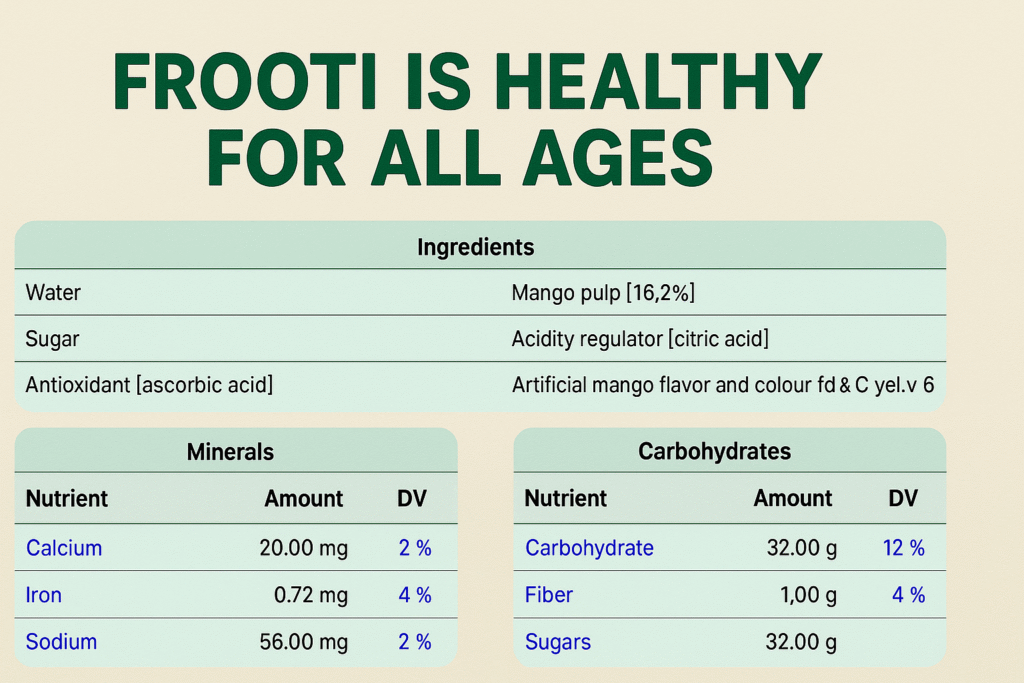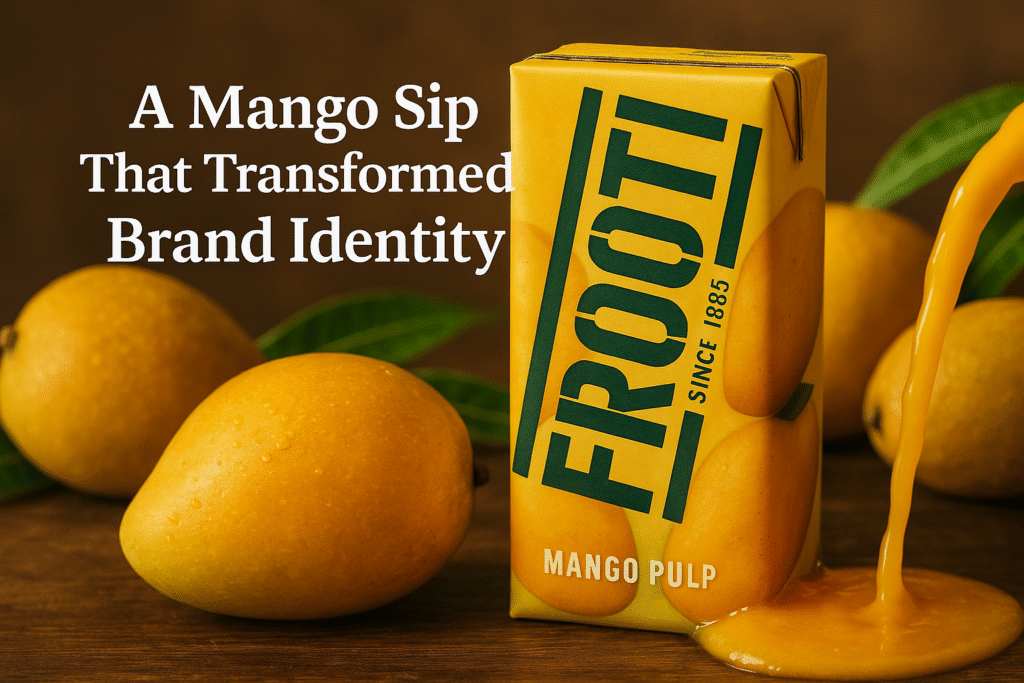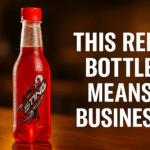If someone says ‘mango sip’, a rich taste of Frooti starts coming into the mouth that brings back the sticky-sweet joy of childhood summers.
Yes! For Indians, Frooti is more than a mango drink; it’s a memory of school picnics, family gatherings, childhood birthday parties, and more.
Over the years, this unique beverage has quenched our thirst, carved a place in our culture, and evolved its brand identity through a dramatic packaging journey.
Frooti’s consistent market presence and carefully crafted formulation are a testament to its transformation in both taste and style. So, let’s know how Frooti’s tetra pack has become a staple in Indian homes and also a major force in redefining its image among competitors.
A Sweet Beginning of Innovation
Parle Agro launched Frooti Tetra Pack in 1985 to enter the Indian market as the country’s first ever mango drink that comes in a type of container, typically made of laminated paper and plastic.
At that time, plastic bottles weren’t common, and carbonated drinks dominated the scene, but Frooti’s entry was revolutionary. Because of the mango’s fruity taste and the convenient and hygienic packaging, Frooti became famous.
We all remember getting our first Frooti in school as a rectangular, brick-like box, which was oddly satisfying to hold. The moment you poked that tiny straw through the top and took your first sip made our childhood magical. That original green-and-yellow box became a part of every kid’s summer story because that fits in our small pocket money too. With the tagline “Mango Frooti, Fresh and Juicy,” Frooti was on each tongue.
Packaging Evolution of Frooti Tetra Pack
Over time, Frooti thought that in order to stay relevant with new Millennials and Gen Z (those words didn’t exist at that time), it had to refresh its visual appeal, but without losing the iconic essence.

- The Old Tetra Packs (1985–2005)
The original Frooti pack was a simple green and yellow box, reflecting the freshness of mangoes and the simplicity of childhood. The design was functional—perfect for school tiffins and train journeys.
- Redesign and Youth Focus (2005–2015)
In an attempt to appeal to the urban youth, Frooti shifted to brighter shades, incorporating more mango-yellow and orange tones, and experimenting with fonts and layouts. The packs started getting sleeker, and the branding began to shift from “child-friendly” to “everyone-friendly.”
- The 2015 Brand Makeover
This year was a game-changer. Frooti collaborated with global design studio Sagmeister & Walsh for a complete rebranding. The new design featured bold colors, playful typography, and a minimalist style. The focus was clearly on fun, freshness, and visual storytelling. The new packaging helped Frooti break into the premium segment while maintaining its mass appeal. The tetra pack was resized and streamlined to fit easily in handbags, school bags, and travel kits.
Today, Frooti tetra packs come in 65 ml, 125 ml, 160 ml, 250 ml, and 1-liter sizes—catering to every kind of consumer, from kids looking for a quick treat to families buying in bulk.
Availability in the Market: From Kirana Shops to E-Commerce Carts
Frooti’s strength lies in its widespread reach. You’ll find it everywhere—on the dusty racks of small-town kirana stores, in the coolers of urban supermarkets, in multiplex canteens, airport lounges, vending machines, school cafeterias, and now, on every major grocery app and e-commerce platform.
Writer’s Personal Frooti Story: When I visit my hometown, I see local shopkeepers displaying Frooti packs in open coolers. In the city, I order the same drink through an app with a discount. Whether it’s a train journey, a road trip, or just an evening at home with Netflix, Frooti is never far away.
We should be thankful to its consistent supply chain development and strategic marketing, as Parle Agro has ensured that Frooti is available in millions of retail outlets across India. In the Middle East, North America, and the UK, Frooti Tetra Pack shows that nostalgia is exportable.
Ingredients and Nutritional Facts: Simplicity with Sweetness
So what exactly goes into Frooti that makes it so addictive?
Basic Ingredients:
- Mango pulp
- Water
- Sugar
- Acidity regulator (citric acid)
- Antioxidant (ascorbic acid)
- Preservatives (usually potassium metabisulfite)
Unlike freshly blended mango juice, Frooti uses processed mango pulp, which ensures consistency and longer shelf life. The drink is also pasteurized and packed in aseptic conditions, making it safe and durable without refrigeration, one of the reasons it thrives in Indian weather.

Nutritional Information of Frooti (per 100ml approx.):
- Energy: 64 kcal
- Total Carbohydrates: 16g
- Of which Sugars: 15g
- Fat: 0g
- Protein: 0g
- Sodium: 10mg
While it’s not a health drink, it’s definitely a guilt-free indulgence when compared to aerated beverages. Its fruity content (though limited) does give it an edge in the “better choice” category when picking a refreshment for kids or elders.
Conclusion
Frooti’s transformation through its tetra pack has been nothing short of brilliant. By striking a balance between nostalgia and innovation, the brand has remained fresh in both design and taste. Its packaging evolution, market penetration, and loyal consumer base have helped it stay relevant in a sea of fizzy drinks DIY, and trendy smoothies.
As people who have grown up with Frooti, we can honestly say—it’s not just a drink, it’s a feeling. And every time we pop that straw into a Tetra pack, we are not just sipping mango juice, but sipping a memory.



